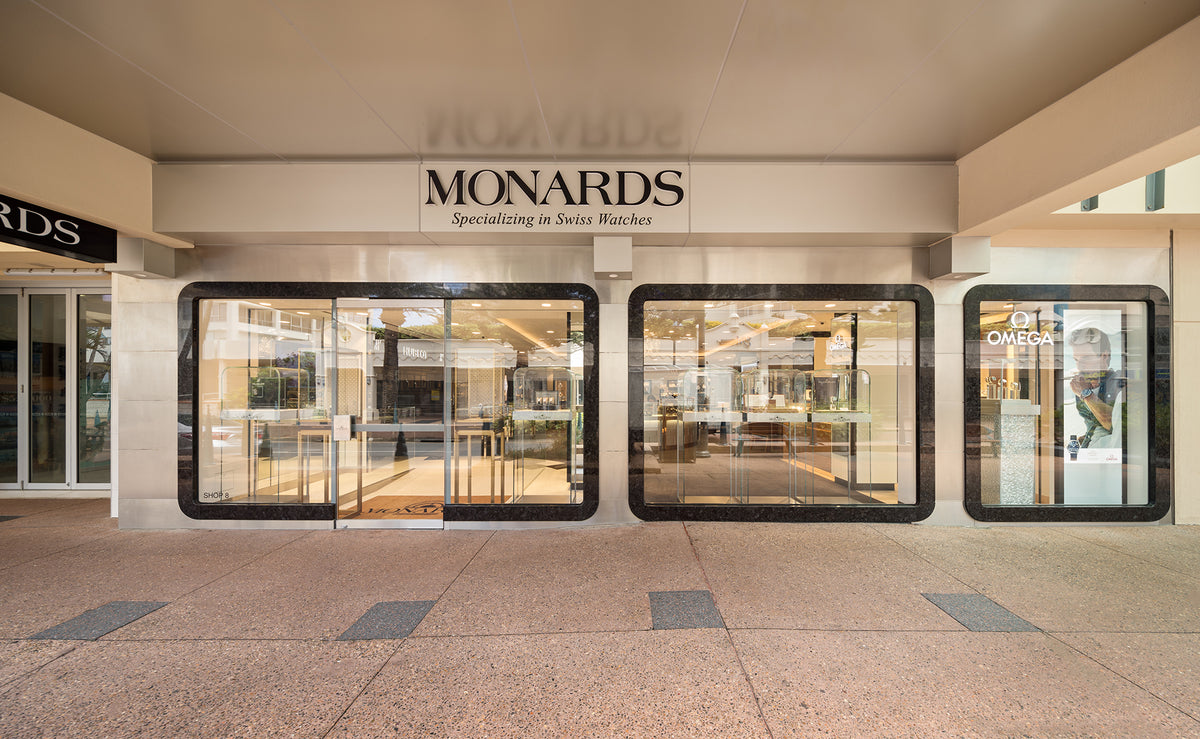
Andreas Strehler is an independent watchmaker. He designs and constructs movements and also manufactures movements and components for other brands. Hence, Andreas Strehler is indeed an engineer for the brands and a watchmaker for the few.
Andreas Strehler designs and builds the watches bearing his name. Each watch is made as it would have been made a hundred years ago: The components of the movements are manufactured in-house; each component is meticulously finished and each watch is individually assembled by hand. On the other hand, Andreas Strehler designs his movements to the most stringent industry standards, using state of the art design and construction software. Further, each component is designed in such a way that an experienced watchmaker, given time and skill, will manage to rebuild it if necessary, using traditional watchmakers’ tools and materials.
The result is watches with the value and beauty of an age gone by but with the precision, reliability and longevity of a modern watch.
Furthermore, Andreas Strehler has been recognized for his skills through different renowned prize: Temporis Hall of Fame (2017), Prix Gaïa (2013), Guiness world record for the most precise moonphase (2014), and Watchfair Luxembourg (2016).
Nowadays, 10 watches from the master watchmaker are leaving the workshop every year. Which make them quite rare piece, that you could see any only a few wrists around the globe.
All components of each watch are finished by hand by Andreas Strehler. Transforming raw metals and noble materials parts into a complete piece of art.
TIschkalender (1997)
The Tischkalender which quite simply means desk calendar and, on the one hand, is exactly that: A work of art displaying the date. On the other hand, it is one of the most complex and astounding pieces of watchmaking since Breguet’s Montre Sympathique. Breguet invented a master clock which wound and set a pocket watch when the latter was connected to the former.
Andreas Strehler’s Tischkalender does something more complex: A pocket-watch displaying the time is inserted into the desk calendar unit which is, in fact, a perpetual calendar. Once the owner goes away from his desk, he takes the pocket watch with him.
The desk calendar stops. Once the owner returns to his desk after some days or weeks, he inserts the pocket watch into the desk calendar. The desk calendar knows how long the owner was absent and sets the date right. It has a mechanical memory.
This complex mechanism is designed in a way which makes it virtually impossible to make an error in its operation. For example, only when the pocket watch is properly inserted does the synchronisation start. And only when the synchronisation is properly done can the pocket watch be removed. The winding mechanism disengages once the Tischkalender is fully wound. In 1997, Andreas decided to actually build the Tischkalender. The pocket watch was finished at the end of the same year.

Papillon Classic (2008)
The Papillon represents Andreas Strehler’s own interpretation of an emotional watch movement. The aim was to create a movement that was a living organism.
When seeing the Papillon for the first time, besides the bridge in the form of a butterfly, one particularly notices the large central gear wheel. Upon closer inspection of the gear train, one notices further that there are only two gear wheels whose movement is barely visible. A seconds-wheel with its fast revolution is completely missing.
When implementing his design ideas, Andreas Stehler not only wanted to create a movement like a natural, living organism. By omitting the “hectic” second and the reduction to only two wheels, the movement has an even more delicate aspect.

Cocon (2012)
Andreas Strehler’s Cocon is a further development of the Papillon. Whereas the living technology was the main feature of the Papillon, Andreas Strehler now puts the emphasis on the readability of the time, the precise time. Time, and its division, was to be emphasized, by a three-dimensional dial. This was done without diverting from his basic technological principles.
The gear train, previously so dominant, is now hidden beneath the dial, invisible to the wearer. The delicate butterfly-shaped cage, formerly the visible hallmark of the movement, is now at the back of the watch, well protected, but still visible under glass. The butterfly, or Papillon in French, thus withdraws into the background, in its cocoon, hidden under the dial.

Sauterelle (2013)
For the first time in a wristwatch, Andreas Strehler offers a mechanical solution which filters nearly all technical and mechanical factors impeding the escapement. The constant and linear supply of energy to the balance is the ideal in watchmaking. It is the basis for precision.
To achieve this aim and to get at the same time a solid basis for future complications, Andreas Strehler was looking for a solution to completely uncouple the escapement from the gear train.
To do this would ensure that the escapement is not influenced by what is happening upstream, i.e. in the gear train. The intended device should be of compact dimensions, guarantee a permanent (i.e. long-lasting) constant amplitude. Further, the solution to be found should be a universal one; this means it ideally should work independently of the frequency of the escapement. This would enable Andreas Strehler to use the device on any future movement he would be designing.
Conventionally, the complication known in watchmaking as force constante is mounted on the escapement wheel. However, this is the point of least torque in the whole movement.

Sauterelle À Lune Perpetuelle (2014)
The Sauterelle à lune perpétuelle is the most precise phase of the moon indication ever built in a wristwatch. It made it into the Guinness Book of Records. It is also the most precise phase of the moon by some margin: Approximately 2.045 million years.
The runner-up, by the way, is Andreas Strehler’s predecessor Sauterelle à lune perpétuelle with its precision of 14’189 years. Technically, the Sauterelle à Lune perpétuelle 2M is based on the Sauterellewhich Andreas Strehler presented last year. Like the Sauterelle, the 2M has Andreas Strehler’s unique remontoir d’égalité. This provides a constant supply of energy to the escapement.

Papillon D’Or (2015)
Papillon is the French name for butterfly, an insect belonging to the order Lepidoptera. A butterfly is light and delicate. But, as it has been around for over 40 million years, it is a very intelligently designed organism.
Like the Papillon d’Or: A large solid gold bridge in the form of a butterfly holds the superbly finished gear train with its two sapphire crystal gear wheels and supports the white fired silver dial ring. Delicate yet sturdy.
The lift generated by a flying butterfly is more than what can be accounted for by steady-state, non-transitory aerodynamics. Its way to fly looks simple but to understand it, one has to know about things like wake capture, vortices at the wing edge, rotational mechanisms and Weis-Fogh ‘clap-and-fling’ mechanisms.

Lune Exacte (2016)
The Lune Exacte features a new patent pending high precision moon age indication, and Andreas Strehler’s patented remontoir d’égalité. It also happens to be the most precise phase of the moon indication ever built in a wristwatch.
The Lune Exacte is the logical next step of the Sauterelle à lune perpétuelle which features a phase of the moon indication with a precision of one day in two million years. In 2014, this feat of engineering earned the Sauterelle à lune perpétuelle an entry in the Guinness Book of World Records. A record that still stands to this day.

Time Shadow (2016)
For his eight’s movement to appear in a watch bearing his name, (for other brands, he has designed and constructed many more), Andreas Strehler has designed a watch limited to eight pieces.
The indication of the watches is reduced to the two basic indications of hours and minutes, but with a twist.
The hours are indicated by a black rotating disc, black like the eight ball in the eponymous billiards game. This hour disc turns around a smaller disc displaying the typical Andreas Strehler butterfly logo, finished in wire-cut.
The hour is shown by the cut-out numeral which wanders over an orange luminous dot. This disc is, in fact, a large gear wheel, linked to the visible gear wheel of the minute hand. This minute hand also has two luminous inlays.
The minute hand wheel thus directly drives the hour disc. The two gear wheels together form a lying eight which is also the mathematical sign for infinity.

Sauterelle À Heure Mondiale (2017)
The Sauterelle à heure mondiale, being a Sauterelle, has the patented Andreas Strehler remontoir d’égalité at 10 o’clock.
At 8 o’clock on the dial, there is a three-dimensional view of the northern hemisphere as seen from above the north pole, rotating counter clockwise once in 24 hours, as the earth does. This is where the phase of the moon indication used to be (not to worry, it still exists and it is still as precise as ever, but we come to that later). This earth on the dial rotates under Andreas Strehler’s familiar sapphire crystal minute ring which here indicates night on earth.
On the movement side of the watch, there is a ring with 24 names of individual cities, representing the 24 time zones. In the centre of this ring, there is a blue steel arrow.

Trans-Axial Tourbillon (2018)
In his quest for perfection, Andreas Strehler has designed, constructed and built a movement where internal influences on the already pretty linear power supply from the epicyclically limited twin mainspring barrels is filtered through a Remontoir d’égalité and transferred to a Tourbillon escapement mounted on the same axis to eliminate the influence of gravity on the escapement.
Voilà the Trans-axial® Remontoir Tourbillon.
The Trans-axial® Remontoir Tourbillon escapement is hand wound, using Andreas Strehler’s own true conical gear wheels (which are the envy of the watch industry).
To show the power left in the two mainspring barrels, the movement has a power reserve indication using an extremely small differential gear, another speciality of Andreas Strehler.





